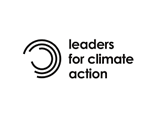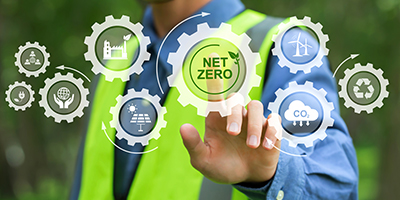20 October 2023
Reducing the software digital footprint via granular green power certificates
Joint study to explore how effectively data centres could adjust their energy use according to the availability of renewable energy in the power grid.
Context
To leverage the rising proportion of renewable energy in the system, Elia Group and two of its partners – Leaders For Climate Action (LFCA) and the Sustainable Digital Infrastructure Alliance (SDIA) – launched a study to explore how effectively data centres could adjust their energy use according to the availability of renewable energy in the power grid.
The data dilemma: navigating the waters of sustainable energy consumption
Today, digitalisation is unavoidable. The process, much like the word itself, is omnipresent. The demand for digital services has grown dramatically over the past few years: since 2010, the number of internet users worldwide has more than doubled and global internet traffic has expanded twentyfold1. This rise can be attributed to a range of more intensive data solutions, including social media, more advanced telecommunications systems, and, more recently, AI and language models such as ChatGPT. All of this traffic passes through data centres. Indeed, this happens more than once, since, according to the IEA, "for every bit of data that travels the network from a data [centre] to end users, another five bits of data are transmitted within and among data [centres]”2. The uptake in data usage has led to a rise in the amount and size of data centres around the world.
This data centre revolution has been accompanied by a higher consumption of precious natural resources such as water, minerals and metals – and an increase in energy usage to keep them running. Whilst data centres may no longer comprise the overheated, back office, noisy servers one might imagine (in fact, many are high-tech, highly efficient specialised machines which are cooled by water), their number and high levels of consumption can no longer be offset by hardware, software or infrastructure-related innovations, which is a difficulty given that their energy consumption is on the rise. The IEA has estimated the electricity consumption of data centres to be 240-340 TWh in 20221, making them responsible for about 1-1.3% of the world’s final electricity demand. Moreover, according to a study carried out by the European Commission, their energy consumption is due to make up 3.2% of Europe’s total electricity demand in 20303.
Despite their drawbacks, unlike other assets, data centres carry the unique feature of being highly digitised and controllable energy systems whose energy profiles can be adapted by having the time at which their IT processes occur shifted. Recognising these efficiencies, and keen to leverage the rising proportion of renewable energy in the system, Elia Group and two of its partners – Leaders For Climate Action (LFCA) and the Sustainable Digital Infrastructure Alliance (SDIA) – decided to explore the potential benefits of this. The project’s goal was to explore how effectively data centres could adjust their energy use according to the availability of renewable energy in the power grid.
Leveraging the LFCA’s research: insights and applications
As preparation for the project, our partners from the LFCA asked 132 of its members (mostly leading technology firms) to fill out a survey. Its goal was to gain an insight into companies’ abilities to use their digital infrastructure in a more sustainable manner.
Responses to the survey confirmed assumptions held by the project team, such as the fact that lots of companies host most of their data on the cloud and therefore use data centres which are not located on their premises. Most of this data is hosted by public cloud providers such as Amazon Web Services (AWS), Azure and Google Cloud Platform (GCP).
Responses to the survey also provided the team with some new insights into company data usage. Most respondents acknowledged that their data loads are predictable around 80% of the time, of which 50% are more or less constant and 30% are predictable peaks which occur at the same times. This ability to predict certain data load demands, along with companies’ assertions that 20% of their services could be run at different times of the day or night, provides a certain amount of flexibility which opens up the opportunity to shift energy-intensive IT processes to occur at times when more green energy is available.
More than 90% of the companies surveyed said they would be interested in knowing what the carbon footprint of their digital infrastructure is and having a more complete picture of the energy intensity of their IT processes. 48% of the companies surveyed confirmed that they would even be willing to pay for a granular certification application which would increase trust in their claims about their consumption of green electricity.
Partnering with the SDIA: bridging theory and practice
To provide companies with more transparency regarding the CO2 intensity of the energy consumption of their data centres and better align moments of green power generation with consumption peaks, Elia Group and the SDIA built a tool which could match the consumption peaks of different software tools with peaks in renewable energy.

Figure 1: Shifting of computing power in time (Image from Google 24/7 carbon free energy white paper4)
As a first step, more detailed information about each data centre’s consumption patterns was needed. The SDIA developed a tool which measures the power consumption of different servers and entire racks through the use of three different measurement systems (RAPL, IPMI and physical meters). This measured power consumption can then be brought down to power consumption of individual servers. The tool, which was installed in two separate data centres, therefore determines what the energy usage of an application or piece of software is, so allowing companies to gain a more granular view of the energy consumption of the different cloud-based tools they employ.
Secondly, Elia Group explored the creation of an application which could match peaks in energy consumption with peaks in renewable energy, providing companies (and so, their customers) with more transparency and enabling them to better steer their future consumption peaks.
Once Elia Group provided the project team with production forecasts relating to a select group of renewable assets, a one-platform mock-up was created in which both production and consumption curves are placed over each other. The key issue here was to ensure that the assets which provide the production data are situated in the same balancing area as the asset(s) consuming the energy they produce. This ensures that a realistic claim can be made about their renewable energy consumption. By visualising the production of green energy and matching this production with the consumption of its assets, the data centre is able to gain access to a real-life display that depicts its green power mix.

Figure 2: Renewable energy production forecast
Figure 2 provides an overview of the production forecasts relating to three different assets that lie within the balancing area of data centre X. On the basis of this, the data centre is able to schedule the moments at which its assets should consume energy.

Figure 3: Matching of consumption to production
Figure 3 provides an overview of the data centre’s total consumption, including what proportion of this was met by green energy.
Next steps: In order to incentive users to shift their data loads to times of the day during which high amounts of renewable energy are available for consumption, Elia Group is developing a scheme which retroactively matches the times at which green energy has been produced with the times at which energy has been consumed. This scheme, which aims to track the transmission of green energy from producer to consumer and is based on the issuance of granular certificates, is currently being developed by Elia Group’s Energy Track and Trace project.
Turning challenges into opportunities: our company’s sustainability strategy
Elia Group’s mission is to drive the energy transition and so decarbonise Europe by delivering power infrastructure and shaping European markets. In addition to helping Europe reach climate neutrality through the expansion of our grid and integration of renewable energy into the system, sustainability is embedded throughout the way we run our business and plan, build, operate and maintain our assets. Our ESG program, ActNow, outlines long-term targets for our organisation, each of which falls under one of five dimensions: climate action; Environment & Circular Economy; Health & Safety; Diversity, Equity & Inclusion; and Governance, Ethics & Compliance.
As part of this, by increasing the efficiency of our data management policies, we try to mitigate and avoid the inefficient storage and use of data. Additionally, we try to reduce the amount of cloud data space that our company uses. We also focus on reducing the emissions produced by our own data usage and the consumption of the data centres we use. The goal of mapping and reporting these emissions in a correct and transparent manner is aligned with both the Energy Efficiency Directive5 (as amended by ‘Fit for 55’), aiming at reducing the energy consumption and boosting energy efficiency within Europe, and the Corporate Sustainability Reporting Directive (CSRD)6, which aims to enhance and standardize the sustainability reporting requirements for companies in the EU. Both these directives require the energy consumption of physical data centres to be reported on. Elia Group expects European legislation to be further developed in such a way that more detailed reporting of IT-related energy consumption (related to user devices and cloud data centre usage) will be required.
A recent study conducted by Elia Group's Sustainability Team attempted to chart the different emissions originating from our data centres and user devices. An analysis of the results indicated that the use of less energy-efficient physical data centres constitutes the most significant portion of our data consumption due to the need to store critical data on our sites. The use of cloud data centres by Elia Group teams and staff is minimal.
After attempting to estimate the energy usage (and associated emissions) of the Group’s IT assets, the Sustainability Team concluded that the operational monitoring of this is currently lacking and that the Group will need to invest in monitoring its physical and cloud-based data centres in order to comply with future EU regulations.
Looking ahead at the future of sustainable data management
Drawing on the results of the LFCA survey and Elia Group study, it is evident that sustainable digital infrastructure is a top concern for businesses. Their strong interest in monitoring the carbon footprint of their digital infrastructure and having a better understanding of the energy intensity of their IT processes suggests that there is a clear opportunity for the proof of concept developed by Elia Group, the LFCA and SDIA.
The tool developed by the SDIA which offers granular insights into power consumption at the server level, in conjunction with Elia Group’s renewable energy forecasts, offers a compelling opportunity to match a data centre’s energy consumption with the renewable energy produced by assets in its vicinity. It lays the groundwork for a highly transparent, real-time display of a company’s green power mix, enabling companies to better align their data consumption with the availability of renewable energy.
In order to enhance this proof of concept, we need to integrate Elia Group’s energy tracking and tracing capability into it. The issuance of granular certificates that enable green energy production to be matched to its consumption would further promote the shifting of data loads towards times when renewable energy availability is at its highest, ultimately helping companies to reduce the overall carbon footprint of their digital operations.
As an additional step, Elia Group aims to onboard data centre clients to its proposed tool. This will allow them to enhance their service offerings and gain a competitive edge. It would support their sustainability goals and their compliance with evolving European legislation regarding the detailed and correct reporting of their IT-related energy consumption patterns.
In conclusion, the partnership between Elia Group, the LFCA, and SDIA demonstrated that there are promising opportunities for digitalisation to be undertaken in a sustainable manner. Through targeted investments, strategic partnerships and innovative approaches, we are turning current challenges into opportunities, supporting developments in sustainable energy consumption.
1 Data Centres and Data Transmission Networks, International Energy Agency, last accessed in August 2023
2 “Data centers keep energy use steady despite big growth”, Deutsche Welle, last accessed in August 2023
3 Energy-efficient Cloud Computing Technologies and Policies for an Eco-friendly Cloud Market, European Commission, last accessed in August 2023
4 Clean Energy: 24x7—Carbon-free Internet - Google Sustainability
5 Energy efficiency directive (europa.eu)
6 Corporate Sustainability Reporting: New EU rules for large companies and listed SMEs | White & Case LLP (whitecase.com)
Partners
 |
 |





